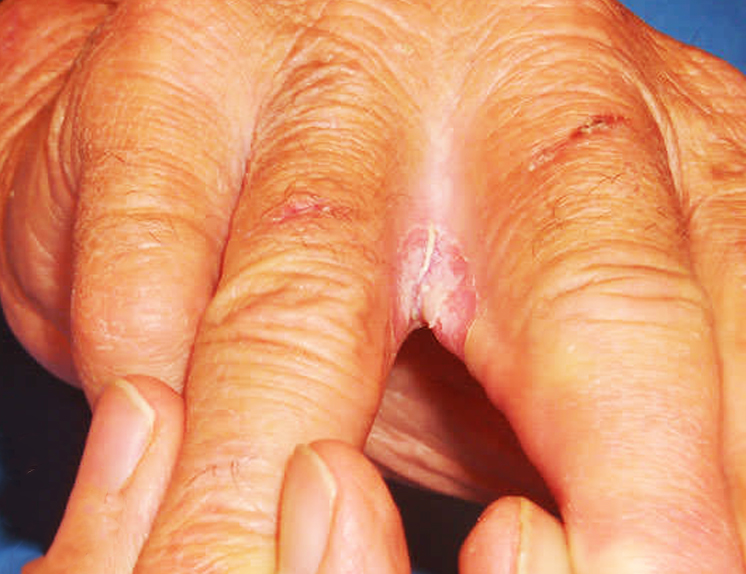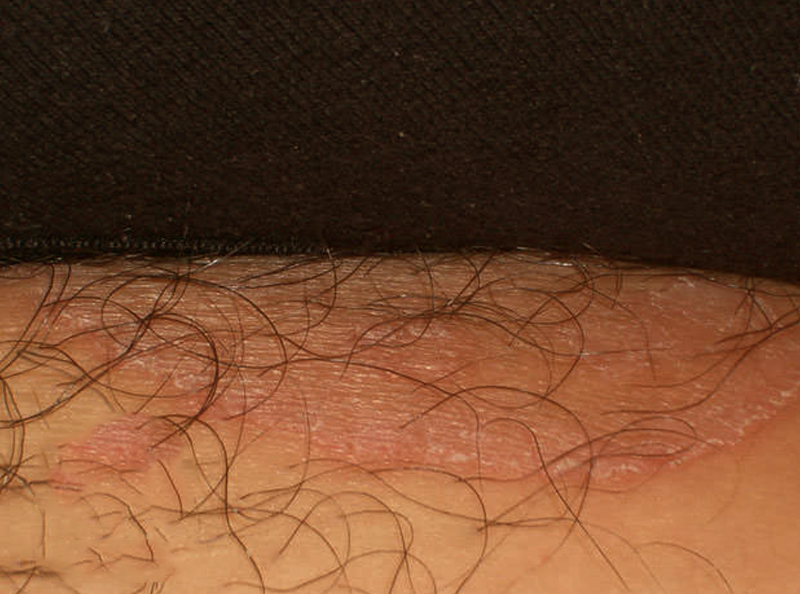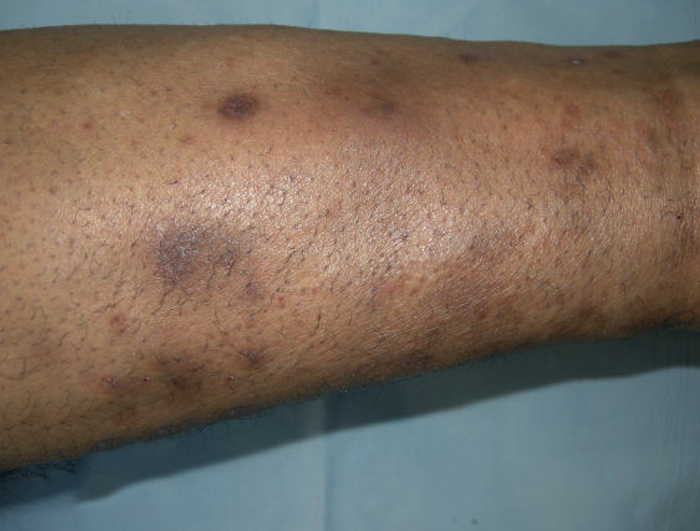Diabetes is a disorder of chronic hyperglycemia ( high levels of sugar in blood) that poses several complications to the patient, if not controlled well. One of the complications are those pertaining to skin.
There are several causes and types of rash that we see in diabetic patients. Some of the causes of rash in a diabetic are:
- Bacterial and fungal infections that occur due to a decreased immunity in a diabetic patient.
- The occlusion of small blood vessels (micro angiopathy) resulting in decreased blood flow to the skin.
- Medication used to control blood sugars.
Candida infection

Candida infection Erosio interdigitalis blastomycetica (EIB) picture
The most common skin infections are due to a yeast like fungus called Candida albicans which causes itchy rash, red in colour, surrounded by small blisters. It is commonly seen in skin folds like groin region, armpits and web spaces between fingers and toes.
Tinea Cruris

Tinea cruris picture
Tinea infections (Ring worm) are another common cause of rash in diabetics. The lesions are itchy with scaly skin in the centre surrounded by blisters, and are seen in groin, feet, scalp, etc.
Diabetic shin spots


Diabetic shin spots or Diabetic Dermopathy is a condition wherein light brown coloured patches are seen on the shin region (front part of legs). They do not require any treatment except maintaining normal blood glucose levels.
Necrobiosis Lipoidica Diabeticorum (NLD)

Necrobiosis Lipoidica Diabeticorum is a condition seen on legs with dull red large, slightly raised lesions. Usually it does not require any treatment unless the lesions break open.
Sulfonylurea rash
Sometimes the diabetic patient may develop rash as a reaction to the medication he is using. Some of the antidiabetic agents that can cause rash are Metformin, Sulfonylureas, Gliptins, Insulin etc. Your doctor may advise you to change the medication if required.
To conclude, most of the rashes can be prevented, to a certain extent, in a diabetic patient, by maintaining good glycemic control and personal hygiene.

